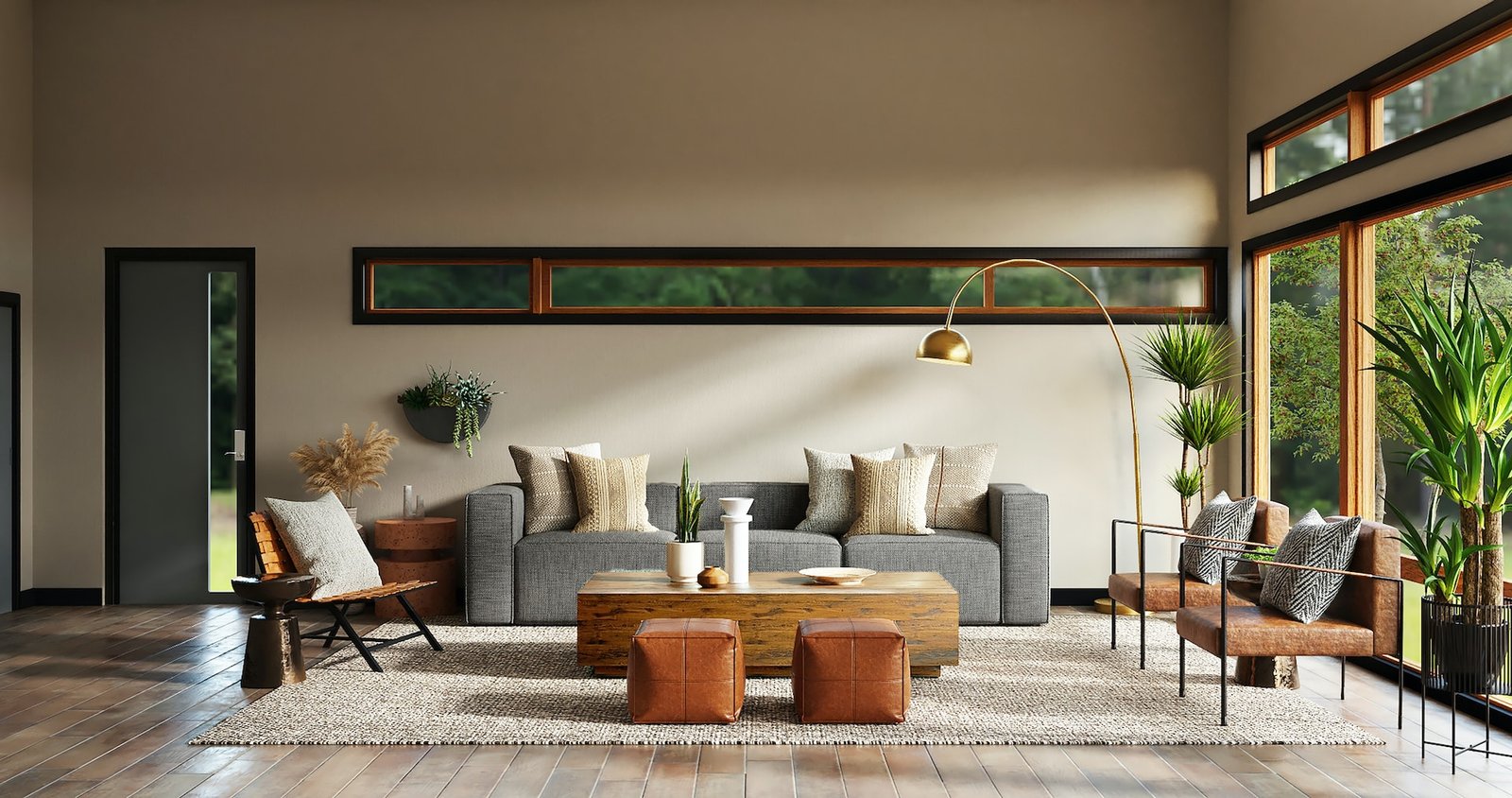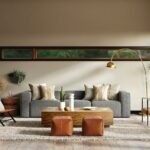As part of the **modern living room design** evolution, **biophilic design**—the practice of incorporating nature into built environments—has moved beyond a trend to become a foundational principle. It focuses on the innate human need to connect with nature, offering proven benefits for mental and physical well-being.
I. The Three Pillars of Biophilic Design
To successfully integrate nature, focus on these three elements:
1. Direct Connection to Nature
- Indoor Plants: Use large, statement plants (e.g., fiddle-leaf figs, snake plants) in prominent areas. Grouping smaller plants creates a micro-ecosystem.
- Water Features: Small, quiet fountains can add the calming sound and movement of nature.
- Air Quality: Choose plants known for their air-purifying qualities to enhance the literal health of the room.
2. Light and Spatial Connection
Maximize access to natural light. Position seating to enjoy views of the outside, and use sheer curtains to diffuse sunlight rather than blocking it, mimicking the quality of light in a forest canopy.
II. Indirect Integration Techniques
You can still achieve the benefits of **biophilic design** even if you don’t have a green thumb.
1. Natural Materials and Patterns
- Organic Textures: Incorporate materials that are minimally processed, such as raw wood, natural stone, wool, and linen.
- Nature-Inspired Art: Use artwork that features nature scenes, landscapes, or geometric patterns found in nature (e.g., honeycombs, spirals).
2. Color Palettes from Nature
Move away from artificial brights. Use colors found in natural settings: earth tones, terracotta, deep greens (forest/moss), and sky blues.

Biophilia is a core component of the 2025 wellness trend. Learn how to balance this with minimalism in our master guide: Modern Living Room Design Trends in 2025.





